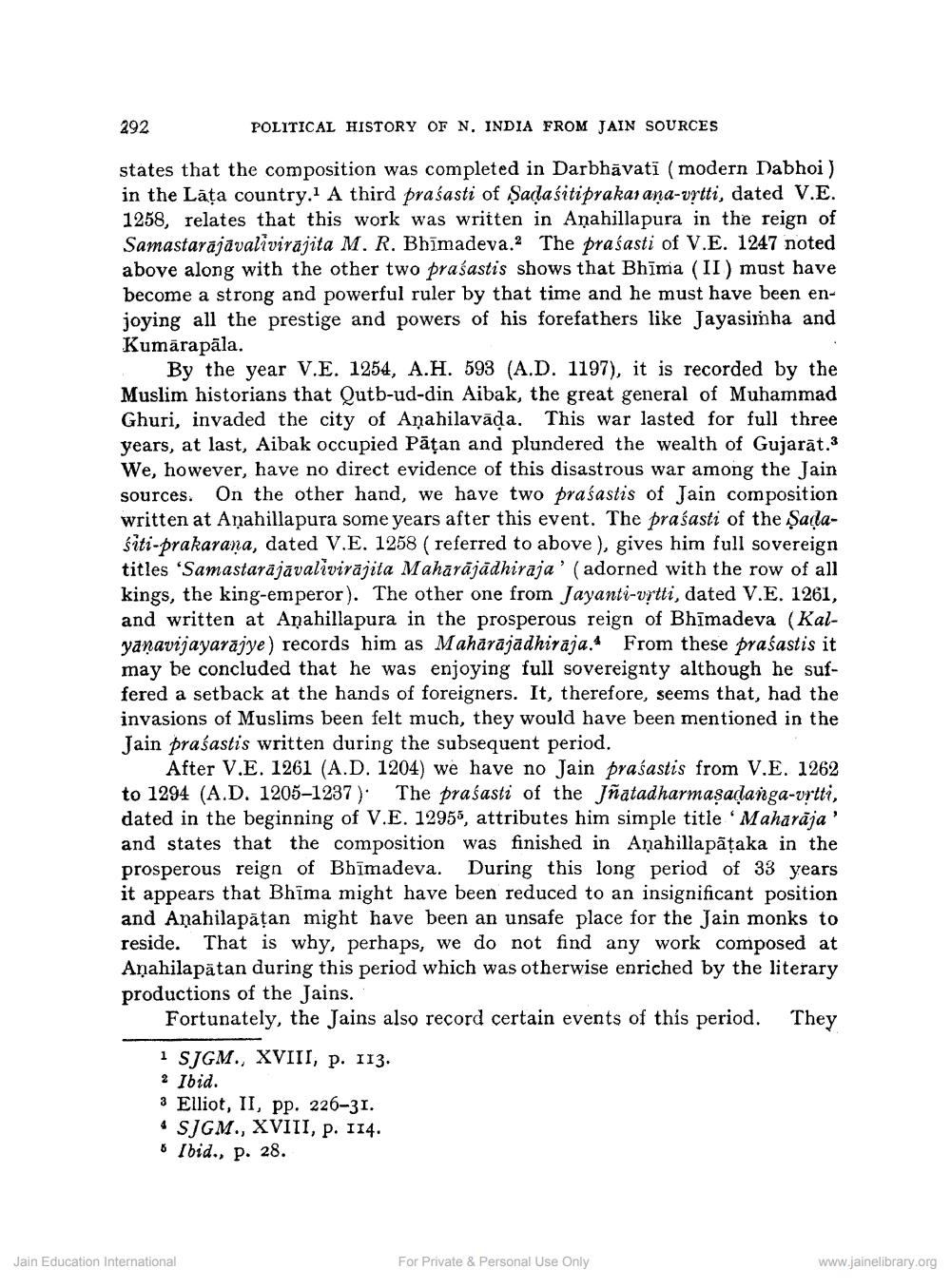________________
292
POLITICAL HISTORY OF N. INDIA FROM JAIN SOURCES
states that the composition was completed in Darbhāvati (modern Dabhoi) in the Lāța country.1 A third praśasti of Şadaśitipraka, ana-vitti, dated V.E. 1258, relates that this work was written in Anahillapura in the reign of Samastarajavalivirajita M. R. Bhīmadeva.2 The prasasti of V.E. 1247 noted above along with the other two praśastis shows that Bhīma (II) must have become a strong and powerful ruler by that time and he must have been enjoying all the prestige and powers of his forefathers like Jayasimha and Kumārapāla.
By the year V.E. 1254, A.H. 593 (A.D. 1197), it is recorded by the Muslim historians that Qutb-ud-din Aibak, the great general of Muhammad Ghuri, invaded the city of Anahilavāda. This war lasted for full three years, at last, Aibak occupied Pāțan and plundered the wealth of Gujarāt.3 We, however, have no direct evidence of this disastrous war among the Jain sources. On the other hand, we have two praśastis of Jain composition written at Anahillapura some years after this event. The praśasti of the Şadasiti-prakarana, dated V.E. 1258 ( referred to above), gives him full sovereign titles 'Samastarajavalivirajita Mahārājādhiraja' (adorned with the row of all kings, the king-emperor). The other one from Jayanti-vrtti, dated V.E. 1261, and written at Anahillapura in the prosperous reign of Bhīmadeva (Kalyanavijayarajye) records him as Maharajadhiraja. From these praśastis it may be concluded that he was enjoying full sovereignty although he suffered a setback at the hands of foreigners. It, therefore, seems that, had the invasions of Muslims been felt much, they would have been mentioned in the Jain praśastis written during the subsequent period.
After V.E. 1261 (A.D. 1204) we have no Jain praśastis from V.E. 1262 to 1294 (A.D. 1205–1237). The praśasti of the Jñatadharmaşadanga-vrtti, dated in the beginning of V.E. 12955, attributes him simple title 'Maharāja' and states that the composition was finished in Anahilla pāțaka in the prosperous reign of Bhīmadeva. During this long period of 33 years it appears that Bhīma might have been reduced to an insignificant position and Anahilapāțan might have been an unsafe place for the Jain monks to reside. That is why, perhaps, we do not find any work composed at Anahilapätan during this period which was otherwise enriched by the literary productions of the Jains.
Fortunately, the Jains also record certain events of this period. They 1 SJGM., XVIII, p. 113. 2 Ibid. 3 Elliot, II, pp. 226–31. 4 SJGM., XVIII, p. 114. * Ibid., p. 28.
Jain Education International
For Private & Personal Use Only
www.jainelibrary.org




